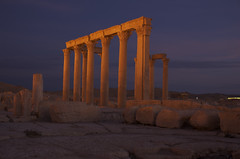A few weeks ago I started a course called, gloriously, "Brand Journalism and Corporate Storytelling". Any guesses what that might be? I'm not a storyteller, but I've got to do with brands in the corporate world. I work in a marketing department and communicate products, brand and company. Telling stories is one way of generating interest, raising awareness, getting the word out; but it's more than that. Storytelling is the latest attempt to rise above the noise of too many ads, too much obvious marketing and too many jaded consumers with ad-blockers and no mind for the 10001st message targeted at them.
The first module of three days focused exclusively on strategy. What's your core story, what themes do you want to cover, what topics fit those themes, and how can they be illustrated with stories? How to write these stories was covered in module 2, which ended today.
Storytelling is creative writing, something I've dabbled in before, without much success. Back then, at Imperial, I was pushed to free expression in the spirit of the surrealists and to ponder my identity. This time, the formal aspects of writing stood center stage. It's been quite edifying.
I had not heard of the universality of the hero story, preserved in its structure across time and cultures. I had not considered the story as simply being something that happens to someone, told with the purpose of enriching the reader. Formulate this purpose (including something and someone) convincingly and a passable story will result, the teacher asserted. A certain way with words is probably still required, but seeing building blocks, rules and patterns felt rather reassuring. Maybe I can do that.
To assess the degree of formality in what I consider good non-fiction storytelling, I decided to look at last week's Economist. How do the first sentences of articles set the scene? How much of protagonist, place, action and scenery is in them?
- As Italians trickled back to the cities from holidays on the coast and in the sun-baked countryside, the scene was set this week for what promises to be a difficult autumn.
- Last year, Saudi Arabia's young and powerful crown prince, Muhammad bin Salman, pulverized Awamiyah, a rebellious Shia town near the eastern coast.
- A row of health workers in blue gowns and face masks sit at tables outside the tin-roofed bungalow that was the home to Kambale Vincent, one of 75 people who have died from Ebola in the Democratic Republic of Congo this month.
- A year ago, insurgents armed mostly with makeshift weapons attacked a series of police posts in Myanmar's Rakhine state, killing a dozens security personnel
- Tucked away in a corner of Gerrard Street, in the heart of London's Chinatown, three middle-aged Chine women sit on the ground, their legs tightly crossed, in silent meditation.
- When loudspeakers in Kouzi, a village in the eastern province of Shandong, blared out urgent warnings of floodwaters heading towards them, residents were anxious, but they did not panic.
- Prosecutors are still investigating what caused Genoa's Morandi bridge to collapse on August 14th, killing 43 people.
This looks as if there were a common theme. People, place and vivid detail – how hard can it be. Turns out these are only seven beginnings out of maybe 100 article in the magazine. The rest didn't follow the template. There might be more to creativity than ticking boxes. Good thing that there's also six more module to my course.

No comments:
Post a Comment